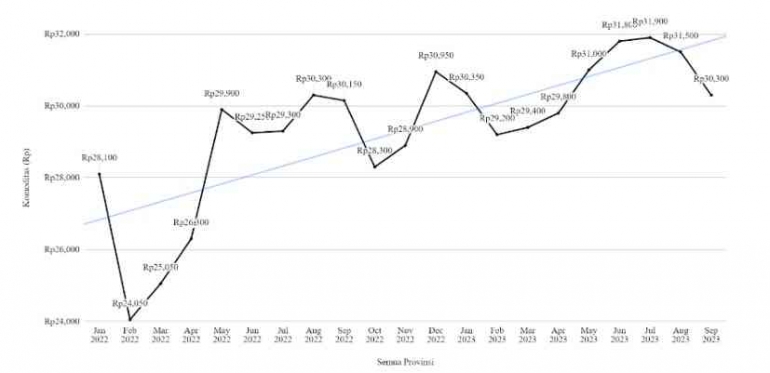Author: Caroline Velenthio Amansyah
Co-writer: Bintang Sebastian Maxi
Introduction: Noticing the Price Hike
Imagine your mother, on the weekend morning, went to the traditional market to purchase several cooking necessities. She got back and vented her disbelief of how everything is just much more expensive compared to last month's. This time, instead of ignoring her, you actually became interested in her complaint of the increasing egg prices.
Luckily, you have some idea on how markets work. You believe that the prices of things depend on many factors, but supply and demand dictates the overall price consumers get. If there is a high demand of eggs and there is not sufficient quantity of eggs then of course the price rises! However, something does not align with your assumption. If that is the case, then why does the price increase happen to every item your mother purchases? Does every food's demand exceed its supply in the market? A greater force is at play, you firmly decided. You quickly check the consensus of egg prices from Bank Indonesia's PIHPS (Pusat Informasi Harga Pangan Strategis) Nasional (Figure 1).
Upon close observation, egg price was steadily falling until the end of 2021 then by January 2022, it significantly rose up until August 2023. Now, the egg price is indeed at its highest since the new normal started, that is a year after the COVID-19 pandemic. Quite recently on the news, the Director General of Domestic Trade at the Ministry of Trade, Isy Karim, commented that the surge in chicken egg prices has been a trigger for inflation in May 2023. The national average price of chicken eggs as of May 31, 2023, stands at Rp 32,100 per kilogram (Figure 2). This figure represents a significant increase of 6.64 percent compared to the previous month's prices (Widyastuti, 2023), hitting its peak in July 2023, just a rupiah away from Rp32,000. These months, the price seems to be, more or less, stagnant up until right now since the average price per kilogram as per October 2023 is Rp29,200 with the highest and lowest price of Rp38,150 and Rp16,150 in the provinces of Maluku and Jambi respectively.

From the two figures (Figure 1 and 2), there is a markup of the egg price, around Rp3,000 to Rp7,000, because before getting into the traditional market, the eggs must 'transits' in some distribution stores (Pedagang Besar) from producers. Additionally, the price is even higher on the modern market, ranging from 6 to 11 percent increase of the traditional market's.
Shortly, after some sleepless nights and help from the internet, you learn the concept of inflation. According to the IMF, "Inflation refers to an increase in the price level that is sustained over a significant period of time." Inflation in Indonesia is calculated by BPS-Statistics Indonesia. Based on the Classification of Individual Consumption by Purpose (COICOP) 2018, the Consumer Price Index (CPI) is divided into the following eleven categories:


















